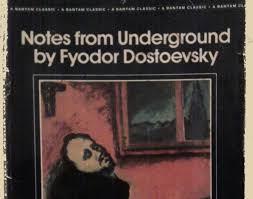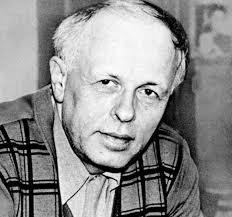 Olga Porterfield, a friend of mine, gave a talk to the Capital District Humanist Society, about Jewish refugees exiting the Soviet Union. She was one of them, at age 20, in 1979.
Olga Porterfield, a friend of mine, gave a talk to the Capital District Humanist Society, about Jewish refugees exiting the Soviet Union. She was one of them, at age 20, in 1979.
She began with a quote from Martin Luther King, Jr. — “We may have all come on different ships, but we’re in the same boat now.”
Olga Zemitskaya was born in Moscow in 1959. Jewish identity was submerged; in fact, she said, growing up she had no idea what “Jewish” meant. Her Jewish consciousness was awakened when her father brought her to a synagogue for a Simchat Torah celebration. This was actually a subversive thing to do in the atheistic USSR.

Anti-semitism has a long and dreadful history in that part of the world. Russian anti-semitism went into overdrive in the wake of Israel’s 1967 Six-Day War victory. The situation was aggravated by the 1970 “Airplane affair” when a group of Jews tried to hijack a small plane to escape the USSR.
You couldn’t just pick up and leave. The authorities had to grant permission — and just requesting it marked you as a pariah, you were persecuted for it. Quite a few Jews nevertheless got permission, and went to either the U.S. or Israel. But there were also a great many “refuseniks” — Jews whose exit visas were refused. This became a focus of international condemnation toward the USSR. In 1975, America in response enacted the Jackson-Vanik amendment, punishing the Soviets on trade terms.
To illustrate the issue’s prominence, Olga showed Saturday Night Live’s Gilda Radner babbling on about “Saving Soviet Jewelry.” When informed that the issue was actually “jewry,” she responded with her standard line, “Never mind.”

Shcharansky
A leading refusenik agitator was Anatoly Shcharansky. I remember first seeing him, interviewed in Russia around 1976, and being flabbergasted by the courage of his outspoken criticism of the Soviet regime. In 1977, he was arrested, falsely charged as a spy, and sent to a Siberian ordeal. In 1986, finally, America got him out — exchanged for real spies. Today, as Natan Sharansky, he is an Israeli government minister.
Also mentioned by Olga was Andrei Sakharov, the nuclear physicist who became a vocal dissident, and his Jewish wife, Elena Bonner. Sakharov was immured in internal exile in Gorki.

Sakharov
But as the dictatorship began to crumble, Sakharov actually became a member of parliament, called the nation’s conscience. He died the month after the Berlin Wall fell.
But for Olga her greatest hero was her mother, for whom Olga’s emigration was a deep personal loss; yet she actively supported her daughter in this.
In 1979, the USSR invaded Afghanistan, becoming even more of an international pariah. In a piqued response to the criticism, the Russian regime slammed shut the door on emigration. But luckily for Olga, she had rejected her family’s pleas to hold off and wait until they all could go; she had applied for her exit visa; and got it before the door shut. Her parents were subsequently refused. (They finally reached America in the Gorbachev era.)

Soviet exit visa
Olga showed on the screen that most precious document — her official permission to leave the Soviet Union — forever.
She traveled first to Vienna, then to Rome, to wait for documents to come to America. She loved the weeks she spent in Rome. People were all smiling, she said; “nobody smiled in Moscow.” The workers’ paradise.
Olga arrived in the United States of America on June 21, 1979. When we still welcomed immigrants.
Advertisements